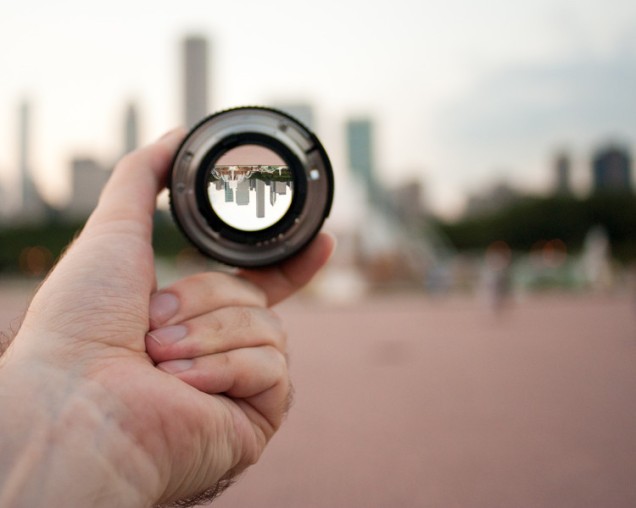
Edit 9/3/15: The SAA has opened up this collection for public access! See my post on it here.
I was delighted to read at Jason Colavito’s excellent blog that the journal American Antiquity has just published a special section in its current issue that’s devoted to debunking popular pseudo-archaeological ideas. This is a fantastic example of the kind of outreach that I (and many others) would like to see academics and academic institutions engage in. I want to commend American Antiquity (and its parent organization, the Society for American Archaeology) for this. But with a caveat: outreach actually needs to, well, reach its intended audience. Right now, that’s not the case.
In archaeology, as with many fields, there’s a vast gulf between academics and the public. This gulf is widened by the lack of much professional incentive for researchers to engage in direct public outreach.
As Jason put it:
In these generally excellent reviews, the authors collectively express dismay that the pressures of modern academia have left the public with unreliable fringe writers as their most important guides to the ancient past while archaeologists talk mostly to one another through specialist publications.
Journals can play a huge role in helping fix this problem. For example, the journal Human Biology published reviews of Nicholas Wade’s book “A Troublesome History” last year in a special open access issue. This issue helped to bring scientific expertise on the complicated topic of race and genetics directly to the interested public. The authors in this issue of American Antiquity have also taken this approach, by critically reviewing selected popular works of pseudo-archaeology with the intent of demonstrating why the archaeological community does not accept their findings.

Donald Holly, who organized the collection of reviews, kindly sent me PDFs of them, as they are currently only available in print form. In his introduction to them he notes the incredible popularity of fringe archaeological shows like Ancient Aliens and books like The Ancient Giants of North America (Dewhurst 2014), and the pressing need for archaeologists to make an effort to communicate their work to the “guy on the airplane.” This collection of reviews, he says, is not intended for the pseudoarchaeologists themselves, as they likely won’t be convinced by any of them. Rather:
the main intent of these reviews is to offer the silent and curious majority that is interested in these works a professional perspective on them, and for those archaeologists who are unfamiliar with them, a primer on pseudoarchaeology today.
The reviews are excellent: sometimes thoughtful, sometimes frustrated, sometimes self-critical, sometimes a bit snarky, but in all cases written with an awareness that the archaeological community has neglected to satisfy genuine public curiosity about ancient history, and that this neglect has contributed to the popularity of fringe (often racist) ideas. I kept wishing, as I read the reviews, that I could upload them directly to this site, or at least quote vast swathes of the text. I would like to directly link you to this issue, but it’s unfortunately only in print form (in a journal that may be difficult for members of the public to access), and as Kristina Killgrove pointed out, the online version will likely be behind a paywall, therefore completely defeating the purpose of this kind of engagement.
I’m calling on the SAA to put this issue (or at least this collection of papers) online as soon as possible and make it open access, so that anyone can read them free of charge. If you’d like to join me, please tweet to @SAAorg, and please share this article with others who might be interested in the subject. Opening up these reviews is a critical part of the outreach efforts by the authors, which will otherwise be largely wasted.
Please, yes, to anyone listening – put this and any additional future scientific rebuttal to pseudo – science crap out there for free public access. The public is not going to pay to be enlightened by the facts. They’re so boring and the pseudo – science so much more fun and free.
It seems an eminently sensible thing to me too. As a geologist I share a mindset with archaeology (stratigraphy is our bedrock), and despair of pseudoarchaeology too.
I agree with everything Dr Raff said,
right up until she suggested that putting this journal issue online and open access would be helpful.
I just don’t think an extra few thousand views online by science-minded individuals is going to help much at all. Even when we can link to it, and we all put it up on our own FB pages, it will still all be “preaching to the choir.”
What’s needed is to reach the TV channel flipper. There won’t be any serious movement against pseudoscience until an organization with the clout of Smithsonian or NASA teams up with a production studio willing to throw in enough $ to make a slick, exciting, funny weekly broadcast of the week’s most hilarious and ludicrous pseudoscience stories, the kind of stories we (here in this room) all wait to pop up in our feeds from Doubtful News and I Fucking Hate Pseudoscience.
A program like that could generate it’s own audience, and also create enough buzz that clips get shared elsewhere, in the same way that satirical news shows like The Colbert Report (RIP) and Last Week Tonight with John Oliver do now.
Now at some point, such a pseudoscience news show would end up reporting something as pseudoscience that turns out to be true. Great! That’s when science-minded people get to shine. Because it’s scientifically minded people that will be thrilled to admit the mistake, hail the research and the researchers in a way even larger than the original story, and point out the huge advantage of science as a way of learning to understand the universe through the process of finding and advertising our mistakes.
I know. I’m an optimist. Just like Theodoric of York.
http://www.imdb.com/video/hulu/vi1312423961/
That might work. “Might.”
About the only people I can think of with the clout to get it going though would be the likes of the Mythbusters team.
Since they already bring in big ratings for the likes of Discovery Channel (well, in the UK at least), then attacking other programming in the same sector (a lot of this stale ejaculate is broadcast on channels grouped with Discovery ; UK again) should make business sense. I think.
The fringe has now become the mainstream.
My younger son took an archeology for non-majors class while studying for his math degree. He was surprised when the first week was spent on “how to do science”, which included how to tell the real from the not real.
Of course this was to combat the notions by many of ancient aliens, the City of Atlantis, etc. The stuff that Ken Feder has confronted many times. He has written a book about pseudo-archaeology, but it is an almost $80 textbook. So wee bit pricey. He is now podcasting, he does tend to get riled up.
Hmmm. Goes to get some podcasts.
here’s a good discussion on pseudoarchaeology by Ken Feder: http://www.voiceamerica.com/episode/78473/our-dumb-ancestors-the-flawed-assumptions-behind-pseudoarchaeology
Thanks for posting this! I listened to it this morning. I read Feder’s book in my freshman intro to archaeology class ages ago, and it’s really fantastic.
I am listening. Here is a more hilarious with higher sound quality podcast with Ken Feder going over the same stories with more detail:
http://www.skeptic.com/podcasts/monstertalk/15/05/20/
Many of these are likely available on self-archiving sites like Academia.edu or Research Gate. In fact, Holly’s review is on his personal Academia.edu site: https://www.academia.edu/14212176/Talking_to_the_guy_on_the_airplane
more open reviews of pseudoarchaeology: http://www.andywhiteanthropology.com/blog/category/giants
https://www.academia.edu/Documents/in/Pseudoarchaeology
All the reviews are now available online: http://www.ingentaconnect.com/content/saa/aa/2015/00000080/00000003/art00013
Yep 🙂 I’m working on a blog post discussing this tonight! Thanks, Brad.